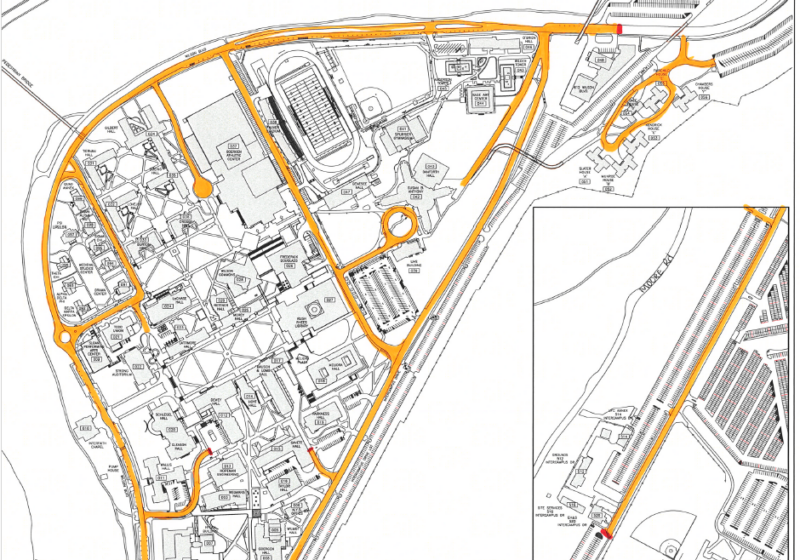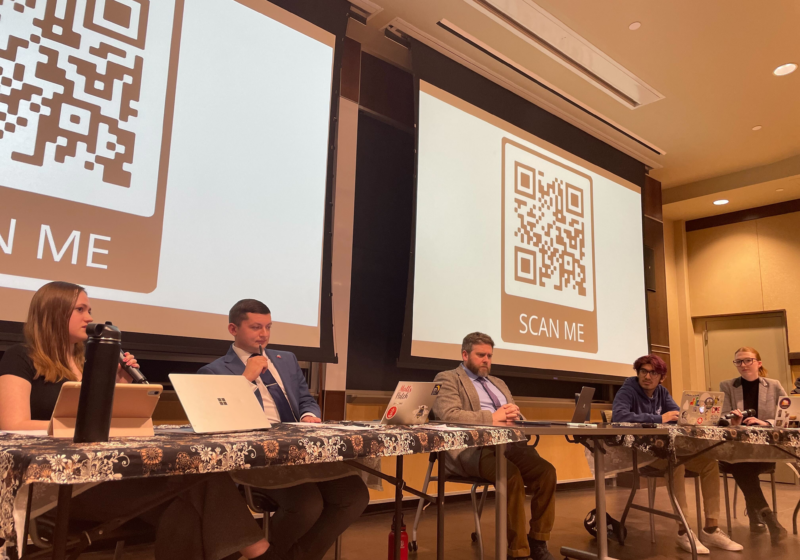The UR Symphony Orchestra concert in Strong this past Saturday started out soft, mysterious, and a little sneaky, with the energetic sound of the violins setting off the performance with Johannes Brahms’ “Academic Festival Overture,” later revealed to the audience to be a collection of drinking songs of the time.
Rachel Waddell, the group’s music director and conductor, gave the audience a history lesson on the piece, which contextualized and helped us better appreciate it. As the piece progressed through its around 11-minute duration, the climactic highs were carried by the violinists’ dextrous hands, as well as marked, crisp articulation across the orchestra, interspersed with some lyrical woodwind lines. Overall a short and pleasant mix of lyrical and exciting, the piece served as a good intro to the rest of the concert, which was much more hefty in terms of technicality and musicality.
The next part of the concert was what I had been looking forward to the most: Alexander Arutiunian’s “Trumpet Concerto,” performed by Orchestra Concerto Competition winner, Jeffrey Pinsker-Smith. With a tone that can only be described as hopeful and glittering, first-year Pinsker-Smith brought out a character in the trumpet that many only dream of hearing. Full of life and clarity, his articulation was spot on and the music he made flowed with ease as he remained completely composed playing a technically challenging piece.
On top of the piece itself, playing as a soloist with an orchestra poses numerous additional challenges. Adding a whole additional piece to fit with the rest makes an accurate performance that much more difficult to create, but I think this group did a fantastic job of not only staying with the soloist, but also of following the conductor. With soloists, the spirit and passion outweigh everything, so even if mistakes were made (by the orchestra or the soloist), I didn’t notice them. The spirit was there in full force, especially during the cadenza, where Pinsker-Smith’s articulation was absolutely impeccable. My only criticism is that the piece ended abruptly and I wanted to hear more. If you’re looking to hear more quality trumpet playing, Pinsker-Smith is definitely someone to keep your eye on.
This was a difficult piece to follow up, but I was not disappointed. I must admit, I was a little bit apprehensive going into the final piece, “Symphony No. 2” by Howard Hanson. Hanson was the director of the Eastman School of Music for 40 years, from 1924 (three years after its founding) to 1964, and wrote the piece for Rush Rhees. (The person, not the library — although the library definitely deserves its own piece.)
Because this symphony is relatively modern, written in the 20th century, I was a bit unsure whether I’d like it. I personally have a harder time falling immediately in love with more contemporary pieces, and while I didn’t fall in love with this one, I did appreciate it. There were some really cool compositional elements, such as the airy texture through parts of the Adagio and Andante movements. The brass playing was impressive throughout, with various horn solos and low brass features, and the final movement finished things off with a blast of energy.
Altogether an exciting program, I was left feeling satisfied, but wanting more. I guess I’ll just have to wait and see what the Symphony Orchestra has in store for us next semester.





